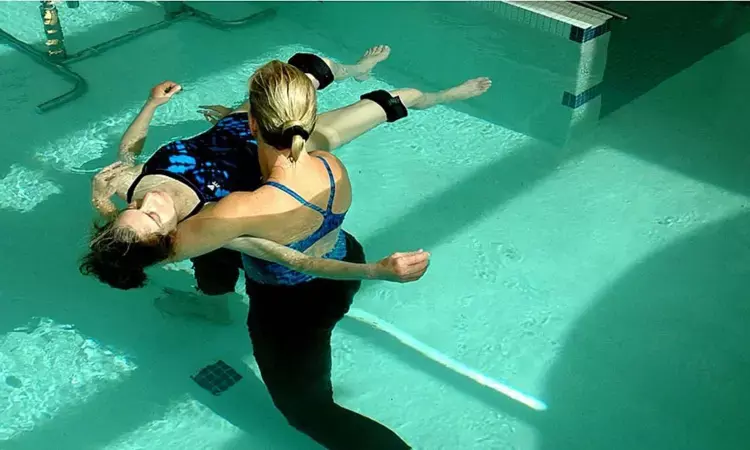- Home
- Medical news & Guidelines
- Anesthesiology
- Cardiology and CTVS
- Critical Care
- Dentistry
- Dermatology
- Diabetes and Endocrinology
- ENT
- Gastroenterology
- Medicine
- Nephrology
- Neurology
- Obstretics-Gynaecology
- Oncology
- Ophthalmology
- Orthopaedics
- Pediatrics-Neonatology
- Psychiatry
- Pulmonology
- Radiology
- Surgery
- Urology
- Laboratory Medicine
- Diet
- Nursing
- Paramedical
- Physiotherapy
- Health news
- Fact Check
- Bone Health Fact Check
- Brain Health Fact Check
- Cancer Related Fact Check
- Child Care Fact Check
- Dental and oral health fact check
- Diabetes and metabolic health fact check
- Diet and Nutrition Fact Check
- Eye and ENT Care Fact Check
- Fitness fact check
- Gut health fact check
- Heart health fact check
- Kidney health fact check
- Medical education fact check
- Men's health fact check
- Respiratory fact check
- Skin and hair care fact check
- Vaccine and Immunization fact check
- Women's health fact check
- AYUSH
- State News
- Andaman and Nicobar Islands
- Andhra Pradesh
- Arunachal Pradesh
- Assam
- Bihar
- Chandigarh
- Chattisgarh
- Dadra and Nagar Haveli
- Daman and Diu
- Delhi
- Goa
- Gujarat
- Haryana
- Himachal Pradesh
- Jammu & Kashmir
- Jharkhand
- Karnataka
- Kerala
- Ladakh
- Lakshadweep
- Madhya Pradesh
- Maharashtra
- Manipur
- Meghalaya
- Mizoram
- Nagaland
- Odisha
- Puducherry
- Punjab
- Rajasthan
- Sikkim
- Tamil Nadu
- Telangana
- Tripura
- Uttar Pradesh
- Uttrakhand
- West Bengal
- Medical Education
- Industry
Therapeutic aquatic exercise effective for patients with chronic low back pain: JAMA

China: Therapeutic aquatic exercise is an effective treatment for people with chronic low back pain (LBP), a recent study has suggested.
According to the study published in JAMA Network Open, therapeutic aquatic exercise program compared to physical therapy modalities resulted in a greater reduction in chronic low back pain and had a long-term effect of up to 12 months. This may prompt clinicians for recommending therapeutic aquatic exercise to patients with chronic LBP as a part of their health through active exercise rather than depending on passive relaxation.
Therapeutic aquatic exercise is defined as water-based treatments or exercise. Water is an ideal environment for conducting an exercise program owing to its properties such as conductivity, buoyancy pressure, thermal capacity, and density. This type of exercise is frequently offered to patients having chronic LBP, however, there is no larity on its long-term benefits.
Against the above background, Meng-Si Peng, Department of Sport Rehabilitation, Shanghai University of Sport, Shanghai, China, and colleagues aimed to compare the effects of therapeutic aquatic exercise with physical therapy modalities in patients with chronic low back pain over a 12-month follow-up period in a single-blind randomized clinical trial performed from September 10, 2018, to March 12, 2019, and the trial follow-up was completed March 17, 2020.
The experiment included a total of 113 people with chronic LBP.
Patients were randomized to receive either the therapeutic aquatic exercise (n = 56) or the physical therapy modalities group (n = 57), and 98 patients (86.7%) completed the 12-month follow-up.
The therapeutic aquatic exercise group received aquatic exercise on the other hand, the physical therapy modalities group received transcutaneous electrical nerve stimulation and infrared ray thermal therapy. Both the groups were given the treatment for 60 minutes twice a week for 3 months.
The primary outcome included disability level that measured using the Roland-Morris Disability Questionnaire; scores range from 0 to 24, with higher scores indicating more severe disability. Secondary outcomes included pain intensity, sleep quality, quality of life, recommendation of intervention, and minimal clinically important difference.
The researchers also performed intention-to-treat and per-protocol analyses.
The study revealed the following findings:
- Compared with the physical therapy modalities group, the therapeutic aquatic exercise group showed greater alleviation of disability, with adjusted mean group differences of −1.77 after the 3-month intervention, −2.42 at the 6-month follow-up, and −3.61 at the 12-month follow-up.
- At the 12-month follow-up point, improvements were significantly greater in the therapeutic aquatic exercise group vs the physical therapy modalities group in the number of participants who met the minimal clinically important difference in pain (at least a 2-point improvement on the numeric rating scale) (most severe pain, 30 53.57% vs 21.05%; average pain, 25% vs 19.30%; and current pain, 39.29% vs 17.54%) and disability (at least a 5-point improvement on the Roland-Morris Disability Questionnaire) (46.43% vs 7.02%).
- One of the 56 participants (1.8%) in the therapeutic aquatic exercise group vs 2 of the 57 participants (3.5%) in the physical therapy modalities group experienced low back pain and other pains related to the intervention.
"Findings showed that atients with chronic LBO who received therapeutic aquatic exercise had a greater improvement in terms of pain, function, quality of life, sleep quality, and mental state versus those who underwent physical therapy modalities," wrote the authors. This implies that therapeutic aquatic exercise is a safe treatment for chronic low back pain and most participants who received it were willing to recommend it to other patients with chronic LBP.
Reference:
Peng M, Wang R, Wang Y, et al. Efficacy of Therapeutic Aquatic Exercise vs Physical Therapy Modalities for Patients With Chronic Low Back Pain: A Randomized Clinical Trial. JAMA Netw Open. 2022;5(1):e2142069. doi:10.1001/jamanetworkopen.2021.42069
Dr Kamal Kant Kohli-MBBS, DTCD- a chest specialist with more than 30 years of practice and a flair for writing clinical articles, Dr Kamal Kant Kohli joined Medical Dialogues as a Chief Editor of Medical News. Besides writing articles, as an editor, he proofreads and verifies all the medical content published on Medical Dialogues including those coming from journals, studies,medical conferences,guidelines etc. Email: drkohli@medicaldialogues.in. Contact no. 011-43720751


